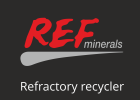Guardian Glass has introduced a new feature to its Performance Calculator tool, that allows the calculating of the embodied carbon for the various glazing configurations. Click here for the details on how it works:
This means architects, specifiers and glass processors can better understand the environmental impact profile of the facades they design through the glass products they specify, allowing them to make more informed choices at a very early design stage.
The current Guardian Glass Performance Calculator is an online tool for modelling the thermal and optical properties of glass substrates, coatings and interlayers. The existing tool is part of Glass Analytics, a comprehensive suite of engineering and analytical tools from Guardian Glass that help demonstrate the benefits of high-performance glass in building facades.
The new Performance Calculator feature provides an estimate of the embodied CO2 equivalent for a wide number of glazing combinations, as it is available for any float glass, coated glass, laminated and coated laminated glass products produced by Guardian Glass in Europe.
How does the Performance Calculator work?
Using the Performance Calculator, the user configures a suitable glazing make-up for their project and can view the corresponding performance data. The glazing can be virtually any construction, ranging from monolithic glass to multiple layers of glass, coatings and interlayers.
In addition to the performance properties generated by the Performance Calculator, the new feature provides an estimate of the embodied CO2 equivalents for the configured glazing (only for the glass components manufactured by Guardian Glass, not for additional components in the build-up such as spacers or frame).
Multiple glass configurations and options can be compared, allowing the user to better understand the impact of, for example, additional layers of glass or the incorporation of a high-performance coating or laminated layers (where the data is available).
How is the embodied carbon calculated?
The embodied carbon data is the CO2 equivalents in kilograms per square metre of glass (CO2 eq.), emitted during the glass production (Cradle-to-gate). The calculation is an estimation based on the material’s Embodied Carbon Factor (ECF) derived from the Regional Environmental Product Declaration (EPD), third-party, independently verified document that communicates transparent information about the lifecycle environmental impacts of a product.



























